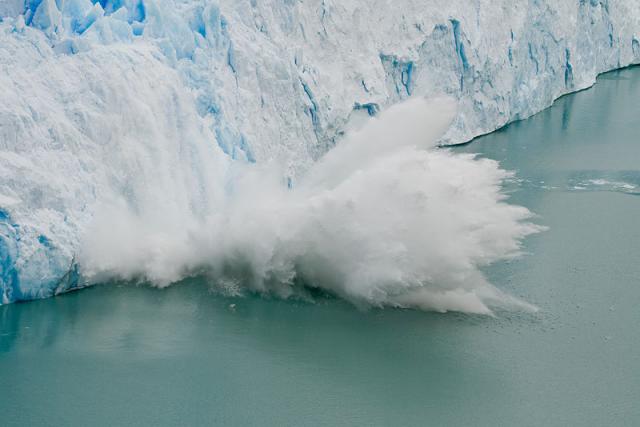The latest massive piece of evidence of climate change appeared this weekend – about the size of Jamaica.
The Wilkins ice shelf off the coast of Antarctica finally disintegrated after decades of melting due to global warming. Last year it shrank by 700 square miles of area or about 14% of its size. This huge shelf was held in place by a thread of remaining ice only 500 metres wide.
The Wilkins is by far the largest ice shelf to break away so far and scientists naturally worry that this is a sign of things to come. The southern continent has warmed by 3 degrees Celsius in the last 50 years and the pace is picking up steam
The collapse comes the same weekend as a new study from the Scientific Committee on Antarctic Research (SCAR) showing one third of all Antarctic sea ice will disappear by the end of the century.
The report found that ice coverage on the Antarctic Peninsula alone has decreased by 27,000 square kilometres in the past 50 years.
Early numbers put out by SCAR suggest the collapse of Antarctic sea-ice not only pushes up anticipated sea level rises but will threaten the numbers of native animal species including emperor penguins, humpback whales and several fish species.
Their research also shows sea temperatures in the Southern Ocean are rising faster than in other oceans, and that ice melts in the Antarctic Peninsula and Western Ice Shelf will be greater and more rapid than expected.
“Ice shelves the size of small countries are crumbling away and the latest evidence from the Antarctic is showing that the effects of global warming there are increasing in magnitude,” said Rob Nicoll of the Antarctic and Southern Oceans Initiative of the WWF.
Scientists were clealry surprised by how fast Wilkins fell apart. “It’s amazing how the ice has ruptured,” said David Vaughan, a glaciologist with the British Antarctic Survey. “Two days ago it was intact.”
The connection with climate change is obvious to researchers who have been studying the area for years. Dr. Vaughan said the breakup up of Wilkins was a “really strong indication that warming is having an effect”.
Wilkins was already floating so the latest breakup will not directly affect global sea levels. However researchers believe that land-based glaciers that were held back by the Wilkins ice sheet will now advance more quickly into the ocean.
Researchers last month doubled their estimates for global sea level rise by the end f the century. Places in Northern hemisphere like New York City will be particularly hard hit due to uneven distribution of rising waters and changing ocean currents in the Atlantic.
The new Obama Administration is taking a refreshingly frank view of these changes rather than the years of delay and denial that defined the Bush Whitehouse.
US Interior Secretary Ken Salazar released a statement about the Wilkins collapse saying it “demonstrates once again the profound effects our planet is already experiencing, more rapidly than previously thought, as a consequence of climate change”.
This urgent sentiment is echoed by his boss. President Omaba told cheering throngs gathered at Prague Castle this weekend:
“To protect our planet, now is the time to change the way that we use energy. Together we must confront climate change by ending the world’s dependency on fossil fuels by tapping the power from the sources of energy like the wind and the sun and calling upon all nations to do their part. And I pledge to you that in this global effort the US is now ready to lead.”
What a difference an election makes. Lets hope its not too late for Antarctica, or the world.
Go here to find out more details about DeSmogBlog’s monthly book give-away.
Subscribe to our newsletter
Stay up to date with DeSmog news and alerts







